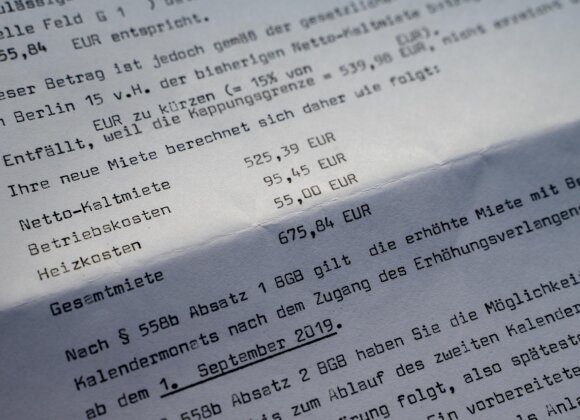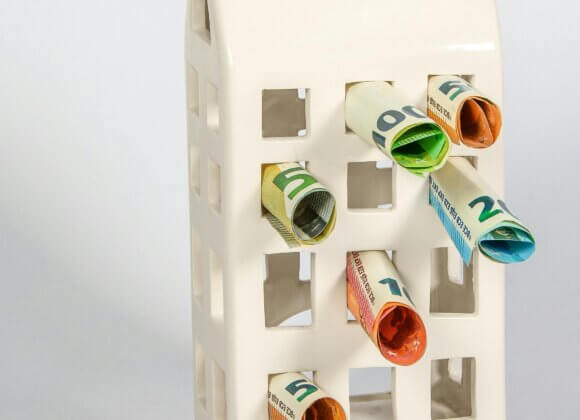The Austrian Tenancy Act (MRG) not only regulates the rights and obligations of tenants and landlords, but also the rents for apartments that fall within the full scope of application of the MRG. To this end, various types of rent are defined, such as category rent and guideline rent. AK housing law expert Clemens Berger explains what this means.
Which apartments are subject to the guide value rent?
The so-called guideline rent, which represents a statutory upper limit, is regulated in the Tenancy Act (MRG) and the Guideline Rent Act (Richtwertgesetz, RichtWG) and applies to most tenancy agreements for old apartments concluded from March 1, 1994.
How is the target rent made up?
The guide value rent is made up of the guide value itself as well as surcharges and discounts, including the so-called location surcharge. The decisive factor for calculating discounts or surcharges is always the condition of the rental property at the time the rental agreement is concluded. If the rent is increased on the basis of a value maintenance agreement, it may not exceed the maximum guideline rent permitted at the time of the increase.
There are reductions, for example, for the absence of a bathroom, toilet, heating, anteroom or cellar, for the absence of an elevator in multi-storey houses and for above-average noise pollution or sloping roofs.
In turn, there are surcharges for balconies, terraces or garages as well as the good location of the apartment in the building. The standard rent is reduced by 25 percent for fixed-term tenancies.
How high is the reference value?
The reference value varies from province to province. In Vienna, for example, it currently stands at EUR 6.67 per square meter, in Vorarlberg at EUR 10.25, in Styria at EUR 9.21 and in Salzburg at EUR 9.22 per square meter. It is lowest in Burgenland at 6.09 euros. While in some federal states the guideline rent cannot be achieved in practice because it is well above market conditions, in Vienna in particular it represents a real rent restriction – at least in locations where no location surcharge is payable.
What is the category rent?
Category rents also apply to apartments within the full scope of application of the Tenancy Act (Mietrechtsgesetz – MRG), but only if the tenancy agreement was signed between January 1, 1982 and February 28, 1994. For new contracts in the area of full application of the Tenancy Act, category rents only apply to sub-standard apartments in category D (WC in the corridor/no running water in the apartment).
What categories are there?
There are four categories depending on the furnishings of the apartment.
# Category A: The apartment must be in a usable condition, have at least 30 square meters of usable space, consist of at least one room, kitchen or kitchenette and anteroom. Furthermore, there must be a modern bathroom with ventilation, a toilet inside the apartment as well as central or floor heating and hot water preparation.
# Category B: No minimum size has been specified for this category. Apartments in this category must also be usable and have at least one room, a kitchen or kitchenette, an anteroom, a modern bathroom with ventilation and a toilet inside the apartment. Special heating and hot water preparation are not required, although these features must generally be available for modern bathing facilities.
#Category C: Apartments in this category must have at least one room, a water supply point and a toilet inside the apartment and must be usable.
# Category D: This category includes all other dwellings which therefore do not have a water point or WC inside the dwelling, whether in a usable or unusable condition.
What is the current category rent?
Unlike the benchmark rent, the basis for calculation is standardized throughout Austria. Like the benchmark rent, the category rent always increases in April in line with the change in the consumer price index (CPI). Currently, the category rent for apartments in category A is EUR 4.47 per square meter per month, for category B EUR 3.35, and for category C EUR 2.23 per square meter per month. In category D, a distinction is made between usable and unusable. In the first case, the rent is 2.23 euros, in the second case 1.12 euros per square meter per month.
What is meant by a “reasonable rent”?
The “reasonable main rent” is a reasonable amount for the apartment in terms of size, type, location, condition, fittings and state of maintenance. The usual local rents for comparable apartments are used for the calculation. The appropriate main rent is hardly an effective rent cap. It is an exception to the guideline rent and is applied, for example, if apartments are located in buildings that were newly constructed with subsidies on the basis of a building permit issued after May 8, 1945, or for apartments in a listed building that the landlord has invested considerable funds to maintain. A reasonable rent can also be demanded for apartments in old buildings that were themselves only newly created on the basis of a building permit issued after May 8, 1945 (and before 2002), for example through a conversion or extension or attic conversion.
Furthermore, the appropriate rent applies to category A or B apartments that are larger than 130 square meters. However, this only applies if the landlord has rented out the apartment within six months of the previous tenant vacating it. If improvement work is carried out, the deadline is extended by one year. In the case of fixed-term tenancy agreements – regardless of the length of the term – a time limit discount of 25 percent must be applied.

Related posts:
Rent change 2025: What tenants should know now












